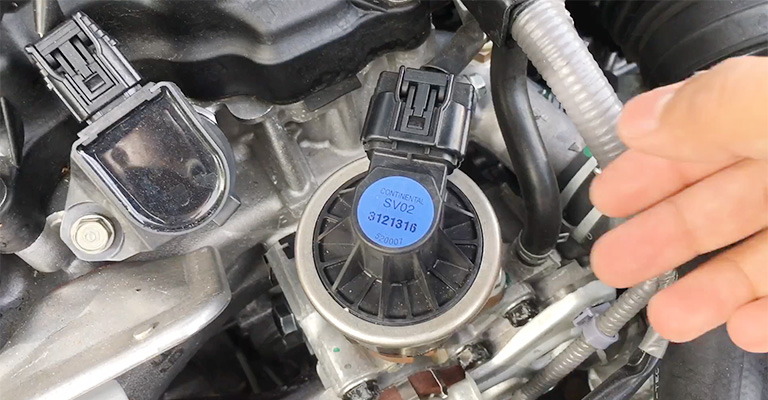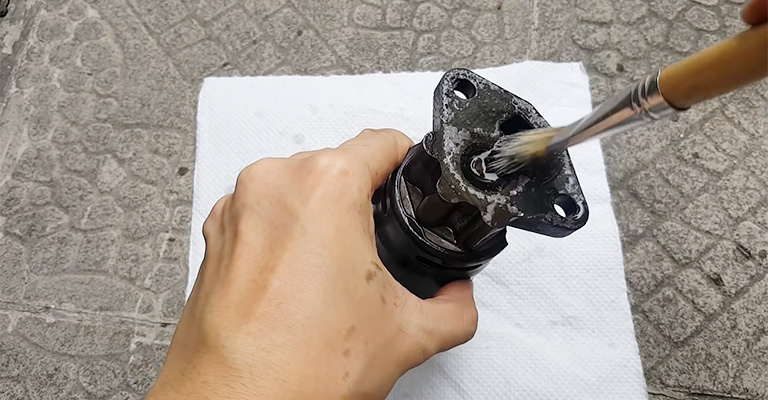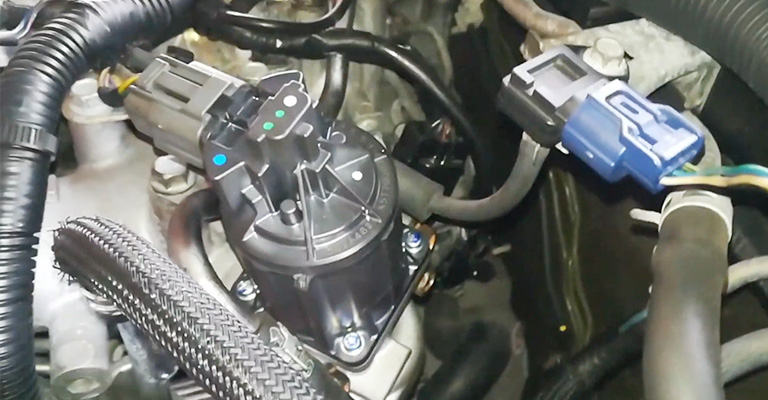Honda P2413 is a diagnostic trouble code that relates to the exhaust gas recirculation (EGR) system in Honda vehicles.
When this code appears, it indicates that there is a problem with the EGR system’s performance, which can lead to increased emissions, reduced fuel efficiency, and other issues.
The EGR system is an important component of modern vehicle engines, and any malfunction in this system can significantly impact the vehicle’s overall performance.
In this article, we will explore the meaning, causes, and symptoms of the Honda P2413 code and the steps required to diagnose and repair this issue.

P2413 Honda: Exhaust Gas Recirculation System Malfunction
The Powertrain Control Module (PCM) controls the Exhaust Gas Recirculation (EGR) valve. An open EGR valve allows exhaust gas from the exhaust manifold to flow through the intake manifold, the EGR passage, and the EGR valve.
A key component of the system is the EGR valve, which allows exhaust gasses to enter the intake manifold and combine with air/fuel. In the engine’s combustion chamber, the mixture is burned after it has been diluted and cooled.
Many EGR valves were vacuum operated in the past. The majority of them, however, are now controlled electronically. The pintle inside the EGR valve is raised off its seat by a solenoid (or stepper motor) built into most electronic devices.
The pintle moves, allowing exhaust gasses to flow into an orifice, pass through passages, and enter the intake manifold. EGR valve operation is controlled electronically by the vehicle’s main computer, the powertrain control module (PCM).
PCM receives data regarding engine operation from sensors such as the manifold absolute pressure (MAP) sensor, mass air flow (MAF) sensor, and engine coolant temperature (ECT) sensor. PCMs then determine when the EGR valve should be opened and closed based on this information.
Exhaust gas is circulated into the air/fuel mixture to reduce NOx emissions to lower combustion temperatures. In the EGR valve, a sensor (lift sensor) detects how much the valve lifts.
The PCM stores the command value for the target valve lift to optimize exhaust gas recirculation. When the PCM compares this command value with the lift sensor output signal value, the EGR valve is controlled to maintain the command value.
A Diagnostic Trouble Code (DTC) is stored if the valve sensor’s output does not match the command valve lift.
Where Is The P2413 Sensor Located?
The majority of EGR valves are mounted on the intake manifold in the engine compartment. The valve is connected to the exhaust system by a pipe.
What Are The Common Causes Of Code P2413?

- Valves in the EGR system are faulty
- There is a problem with the electrical circuit of the EGR system
- The EGR position sensor is bad
- Passages in the EGR are clogged
- Leaks in the exhaust system
- PCM problems
What Are The Symptoms Of Code P2413?
- The check engine light is illuminated
- A rough idle, a lack of power, stalling, or surging of the engine are all symptoms of engine performance problems.
- A reduction in fuel efficiency
- Emissions increased
- The engine won’t start
How Do You Troubleshoot Code P2413?

Visually inspect the EGR system, looking for loose wires, damaged components, etc. In addition, look for technical service bulletins (TSBs) that address the issue. Start a sequential diagnosis of the system if none are found.
There is a difference between diagnostic procedures for different vehicles. It is important to consult the factory repair information for your specific application before attempting to repair your EGR.
There are dozens of different EGR designs in use today. Here’s an overview of how to troubleshoot one type of system. P2413 is a code commonly found on Honda Motor Company vehicles.
Many modern EGR valves are equipped with a built-in position sensor, including those found in Honda cars. By monitoring the position sensor, the PCM determines the actual lift of the EGR valve compared to the desired lift stored in memory.
A scan tool can be used to test this type of EGR valve. The first thing you need to do is look at the EGR position data PIDS for the “desired” and “actual” positions. There should be a similarity between the two values.
A bi-directional control system is also available in OEM-level scan tools to allow users to command a particular valve position. There is a problem with the EGR valve or its control circuit if the valve fails to respond to the command – or the “desired” and “actual” parameters differ significantly.
The valve can also be inspected in other ways. In some cases, manufacturers provide specifications for the resistance of the solenoid used in the EGR valve. It is possible to measure the resistance and compare it to the OEM specifications using a digital multimeter (DMM).
You may also be able to use a jumper wire to power the EGR valve, listening for a noticeable change in engine performance (if the valve is working properly, the engine should run rough/stall). A valve can also be removed and checked for carbon deposits.
Check the control circuit before condemning the valve. The EGR valve on a Honda typically has five wires attached: sensor ground, sensor input, sensor ground, EGR valve control, and EGR valve ground.
Use a DMM to verify that the PCM receives reference voltage and that the position sensor has a good ground. Make sure the EGR valve has good ground and that there is continuity between the PCM connector and the EGR connector.
The factory wiring diagram can be used to diagnose and repair a circuit if any of the above are missing. It is likely that the valve is faulty if the circuit tests out, but the EGR system failed previous tests. Check for external factors first, such as clogged EGR passages and exhaust leaks, before replacing the valve.
Final Words
A DTC P2413 indicates that the PCM has detected a problem with the EGR system. Many Honda Motor Company vehicles support this code, but some other manufacturers do as well. It is commonly attributed to a problem in the intake or exhaust systems on turbo diesel engines, such as the Volkswagen TDI 2.0L.

Leave a Reply